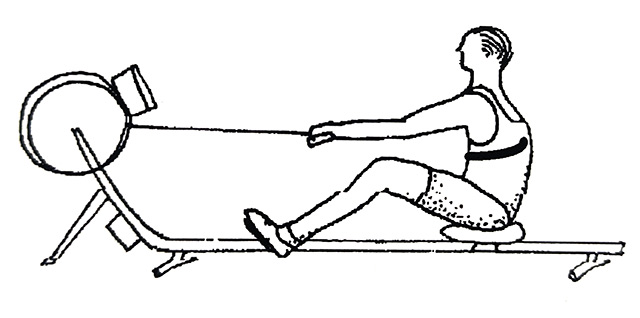Wood, R.J., Hahn, A.G., McBride, M.E. 'The effect of 610 m altitude on rowing ergometer performance', Australian Journal of Science and Medicine in Sport, 27(4), p98-102, 1995.
Anecdotal evidence suggests that the 610 m altitude of the Australian Institute of Sport in Canberra may affect athletic performances, despite the lack of theoretical evidence to support this. Also, the lower air resistance at altitude could alter the mechanics of air-braked exercise ergometers. Therefore, this study compared performance on a Concept II Rowing Ergometer at sea level (SL) and at Canberra (CB). Fourteen male junior rowers (age 16.1 +/- 0.6 years, weight 73.4 + or - 4.1 kg height 182.7 + or - 43 cm) completed two six-minute all-out rowing ergometer tests, in random order at either SL or CB. There was a significantly different (p < 0.001) peak VO2, 4.12 + or - 0.24 (SL) and 3.97 + or - 0.25 l.min-1 (CB). However there was only a small but non-significant difference in the distance completed; 1672 + 39 m (SL) to 1666 + or - 44 m (CB).
 rowing ergometer testing
rowing ergometer testing The similar work completed at CB despite a lowered peak VO2 could not be explained by an increased energy contribution by glycolysis or by changes in rowing efficiency. Peak VI ATP was similar at both locations, although when corrected to STPD was significantly different (p < 0.001). Mean FEO2 was 17.29 + or - 0.25 (SL) and 17.09 + or - 0.28 (CB) indicating a greater O2 extraction at CB, which partially compensated for the lower PIO2. This effect on VO2 at such a low altitude has not been shown before, and means that altitude should always be considered in the interpretation of the results of aerobic fitness tests.
Related Pages
- Full list of research papers by Rob Wood
- About Rowing Ergometers
- Nutrition at Altitiude


 Current Events
Current Events